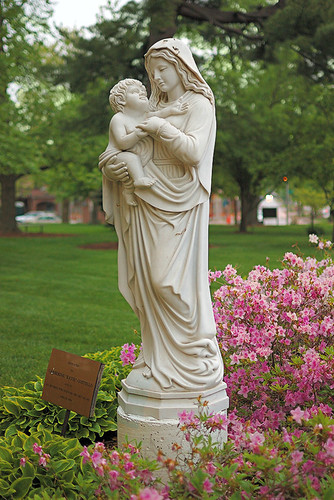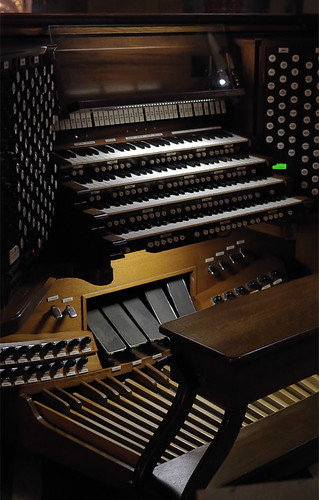THE ROUGH VIRTUES of the old Roman Republic were long lost in the late Empire in the West. Accustomed to great income spent on frivolous luxuries, the ruling classes thought they could buy their way out of any difficulty; while the people were placated by ‘bread and circuses’ and no longer lived lives that were their own. Even knowledge and learning was corrupted: the famous philosophical schools of Plato and Aristotle became debased to skepticism and power-mongering. Long gone were the days when a simple farmer could be raised to nobility by his virtue. Eventually, the time of the Empire in the West had ended and barbarians filled the void, men who had their own rough virtue and eventually rebuilt society along better lines.
Likewise in the Catholic Church today. Skeptical philosophy, power-seeking, and a denial of virtue seem to be the norm in many places, where the Mass is too often seen as entertainment or a venue for empowerment, and not worship. The Body of Christ is weak in these places since they embrace worldliness and not Christ's cross. The generation that upheld the so-called ‘spirit’ but not the texts of the Second Vatican Council have nothing more to say, and their empire is crumbling.
The latest online edition of the Adoremus Bulletin is now online. Click here to read it. Included are articles by Fr. Samuel F. Weber, OSB, who is known for his English-language liturgical chant settings, and architectural historian Denis McNamara, author of the recent book Catholic Church Architecture and the Spirit of the Liturgy.
I notice that some writers in this issue, and quite a few people mentioned inside, come from the American Midwest. This region is derisively called ‘flyover country’ by many on the coasts of the U.S., calling this a land of barbarians. But in the United States, it is precisely these places where much of the current liturgical renewal is taking place, a renewal based on the authentic spirit and text of the Council, a true reform in continuity with the long sacred tradition of the Church.
Friday, April 30, 2010
Wednesday, April 28, 2010
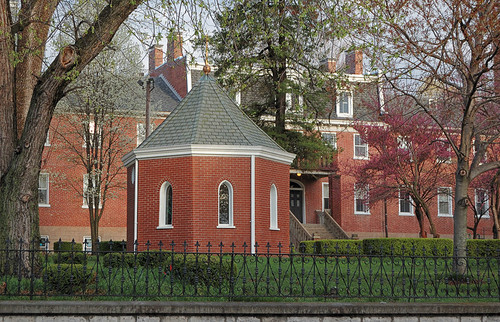
This octagonal building once contained the grave of Saint Rose Philippine Duchesne; her relics have subsequently been entombed in a nearby shrine chapel. Located in Saint Charles, Missouri.
Monday, April 26, 2010
Tree Trunk and Barges on the Mississippi
Forest 44 at Dusk
THE OZARK MOUNTAINS mainly cover the southern part of the State of Missouri and the northern part of Arkansas, and are the only significant mountain range between the Rockies and Appalachians. The extreme northeastern corner of this range extends into Saint Louis County, where it is known as the Crescent Hills; these hills are the location of the Forest 44 Conservation Area, where I took these photos two weeks ago. These photos were taken over a period of more than two hours, from just before sunset until nightfall.

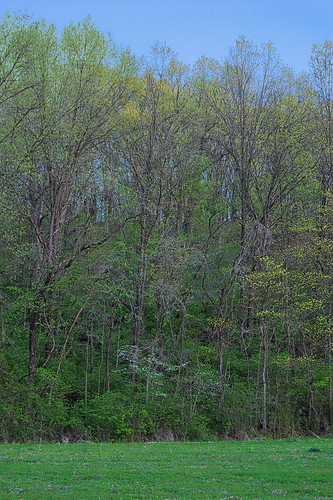
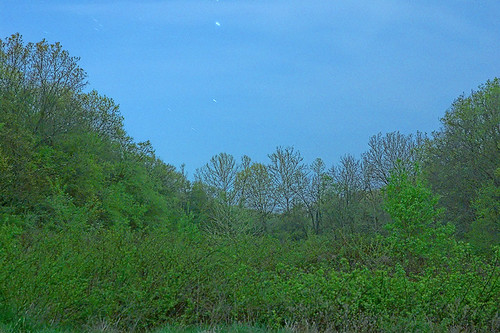
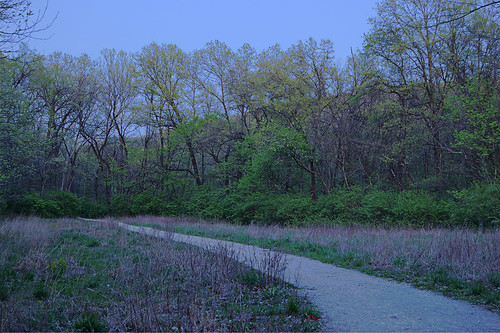
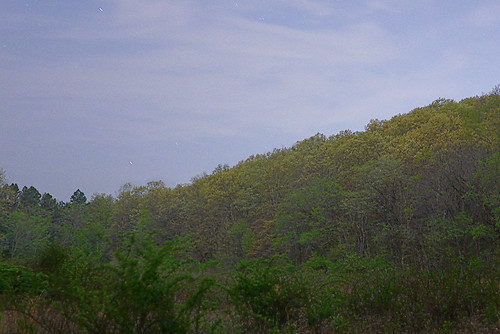
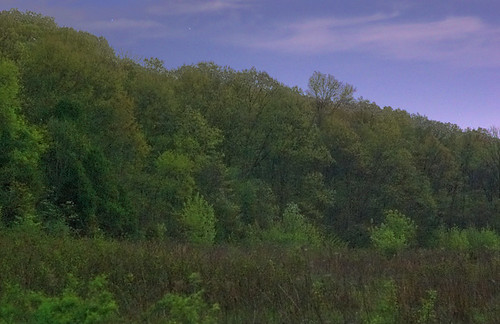

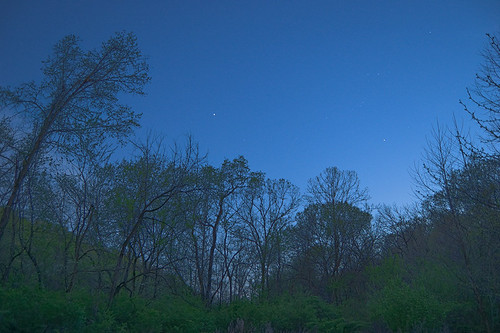














Saturday, April 24, 2010
Friday, April 23, 2010
Floral Finery
FLORAL FINERY is found throughout the area. Now in the middle of Spring, the tulips and daffodils are mostly gone, and we are yet to have roses or very many irises. But the Azaleas and Rhododendrons are now in full bloom. This photos were taken yesterday evening, just before sunset and while it was drizzling; not the best time or weather for flower pictures, but I think they turned out fine.

The above photo is in Saint Louis Hills. The following are in Webster Groves.





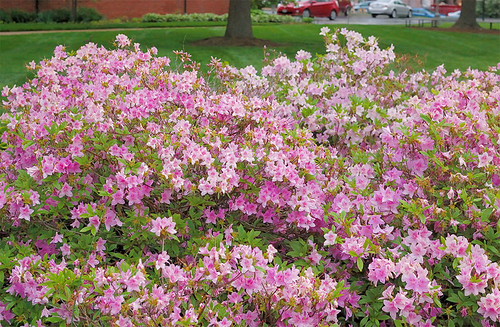
The photo above is in Kirkwood.

The above photo is in Saint Louis Hills. The following are in Webster Groves.






The photo above is in Kirkwood.
"Defacing works of art is a felony"
I FOUND THIS sign the other evening.
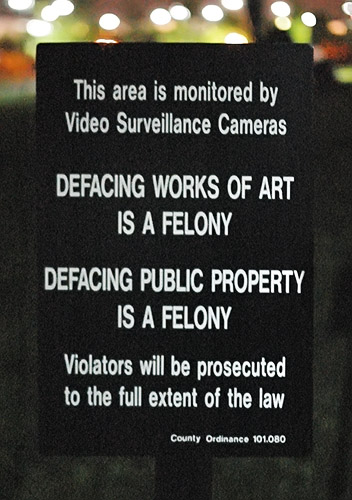
This sign warns potential vandals against the crime of defacing a nearby public sculpture. Was this sign placed in reaction to vandalism here in the past?
But this sign is located in a law-abiding, orderly community. Law abiding citizens don't need to be warned against defacing public property; it is common sense. Such people won't deface an artwork even if they don't like it.
If drunks are defacing this property, then the community's problem is more clearly public drunkenness and not vandalism, and policing should be concentrated on this area's many bars and restaurants that serve alcohol. Likewise, the sign is useless against immature children and the severely mentally ill.
Now it is entirely possible that there are some intelligent, mentally sound, mature adults, not under the influence of alcohol, who honestly don't know that defacing public property is a crime, while also thinking that vandalism is completely acceptable. For this kind of person, this sign would be educational and useful; but does this kind of person exist? If not, the sign is still useless.
This sign might deter principled vandals, those may who want to deface the artwork for the greater good, yet out of prudence aren't willing to pay the severe consequences for that action. Liberal thinkers such as Gustave Courbet, Norman Mailer, Friedrich Nietzsche, and many performance artists have defended vandalism on the basis of principle — although their principles are problematic if not outright wrong. But if the community leaders fear principled vandals, then they have a very serious disconnect with local opinion. Perhaps this isn't the right artwork for this particular place?
Most criminal vandalism is caused by juvenile delinquents. When I was growing up, the standard liberal explanation stated that delinquency was caused by alienation of the youth from their hypocritical, inauthentic elders: such alienated youth would vandalize as a way of expressing their own authenticity and freedom. But if this is true, then the local schools and parents ought not purposely alienate their children, and rather ought to authoritatively teach and practice authentic values and not encourage students to come up with their own value opinions. Vandalism unfortunately is to be expected under our current system.

This sign warns potential vandals against the crime of defacing a nearby public sculpture. Was this sign placed in reaction to vandalism here in the past?
But this sign is located in a law-abiding, orderly community. Law abiding citizens don't need to be warned against defacing public property; it is common sense. Such people won't deface an artwork even if they don't like it.
If drunks are defacing this property, then the community's problem is more clearly public drunkenness and not vandalism, and policing should be concentrated on this area's many bars and restaurants that serve alcohol. Likewise, the sign is useless against immature children and the severely mentally ill.
Now it is entirely possible that there are some intelligent, mentally sound, mature adults, not under the influence of alcohol, who honestly don't know that defacing public property is a crime, while also thinking that vandalism is completely acceptable. For this kind of person, this sign would be educational and useful; but does this kind of person exist? If not, the sign is still useless.
This sign might deter principled vandals, those may who want to deface the artwork for the greater good, yet out of prudence aren't willing to pay the severe consequences for that action. Liberal thinkers such as Gustave Courbet, Norman Mailer, Friedrich Nietzsche, and many performance artists have defended vandalism on the basis of principle — although their principles are problematic if not outright wrong. But if the community leaders fear principled vandals, then they have a very serious disconnect with local opinion. Perhaps this isn't the right artwork for this particular place?
Most criminal vandalism is caused by juvenile delinquents. When I was growing up, the standard liberal explanation stated that delinquency was caused by alienation of the youth from their hypocritical, inauthentic elders: such alienated youth would vandalize as a way of expressing their own authenticity and freedom. But if this is true, then the local schools and parents ought not purposely alienate their children, and rather ought to authoritatively teach and practice authentic values and not encourage students to come up with their own value opinions. Vandalism unfortunately is to be expected under our current system.
Thursday, April 22, 2010
Photos of Saint Nicholas Church, in Saint Louis, Missouri
HERE ARE PHOTOS of Saint Nicholas Church, in downtown Saint Louis, Missouri. Located one block north of the recently-redeveloped Washington Avenue loft district, this church is about 1 and a half road miles northwest of the Old Cathedral and Gateway Arch.
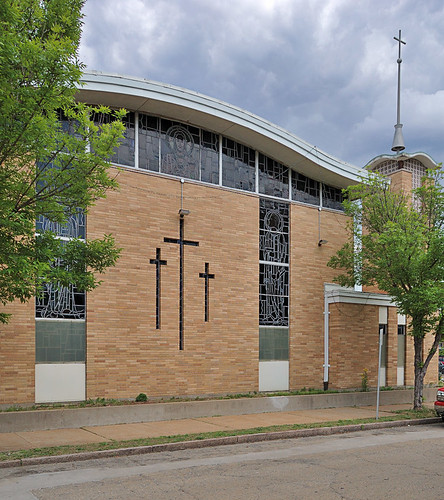
The parish dates from 1865, and the church and other parish buildings date from 1960. According to the parish history:

The church is in the modern style, and the interior is well-appointed for Catholic worship; there are some fine stained glass windows and many devotional icons which are not seen in these photos. Lack of time prevented me from taking more.
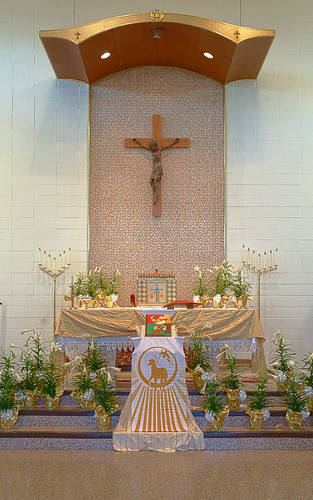
Altar decorated for Easter.
The parish is now near a major new population center: a population that is largely unchurched, and so is an excellent mission field. My other photos of the church are here and here.
Address:
701 North 18th Street
Saint Louis, Missouri 63103

The parish dates from 1865, and the church and other parish buildings date from 1960. According to the parish history:
The Civil War was just closing its gory annals of fratricidal fury, when a group of parishioners went to Archbishop Kenrick with the request for a new Catholic parish.One hundred years ago, the parish was in decline. Industrialization converted much of the neighborhood into factories, including the establishment of the Garment District along Washington Avenue, which was a great national center of clothing manufacture. A change in mission helped turn around the fortunes of this parish:
They lived too far from St. Joseph's Church, they told him. "Secure a suitable place, and I will lend a helping hand," were the friendly words of the church authorities.
The following October 1865, a prominent site on the north-east corner of 19th St. and Lucas Avenue was finally purchased for the sum of $10,500.00. The work progressed so favorably that Archbishop Kenrick was able to lay the cornerstone of the new St. Nicholas Church on May 4, 1866.
A brighter day dawned for St. Nicholas when in September 1926, the church, school and the rectory of the famous old landmark of St. Louis Catholic history was entrusted to the care of the Society of the Divine Word, to serve as a Mission Church for the downtown district and to evangelize the African-American population who meanwhile had moved and were moving into the neighborhood.The Societas Verbi Divini (S.V.D.) still staffs the parish. This missionary society is one of the few major men's religious order that has seen signifcant growth over the last thirty years, having 6000 members in 60 countries. The Society also staffs Resurrection of Our Lord parish in Saint Louis.
The Rev. Joseph Holken, SVD became the fifth pastor of the spiritual parish. His was a gigantic task, but friends were not lacking. Many of the old parishoners gave generously of their time and money. Fr. Holken, SVD labored successfully not only in remodelling all the buildings, but likewise in increasing the school enrollment and inaugurating weekly noonday novenas and noonday masses(that continue to this day) that became so popular with the downtown business people. His efforts were continued by the Rev. Frederick M. Reichelt, SVD who was appointed the sixth pastor from 1932-1937. This marks a period of growth and expansion. The Archbishop was asked permission to acquire adjacent property. He not only consented but was also so generous that, at the end of the expansion, St. Nicholas had acquired three-quarters of an entire city block.

The church is in the modern style, and the interior is well-appointed for Catholic worship; there are some fine stained glass windows and many devotional icons which are not seen in these photos. Lack of time prevented me from taking more.

Altar decorated for Easter.
The parish is now near a major new population center: a population that is largely unchurched, and so is an excellent mission field. My other photos of the church are here and here.
Address:
701 North 18th Street
Saint Louis, Missouri 63103
Monday, April 19, 2010
Sunday, April 18, 2010
Good Shepherd Sunday
TODAY IS Good Shepherd Sunday in the old calendar.
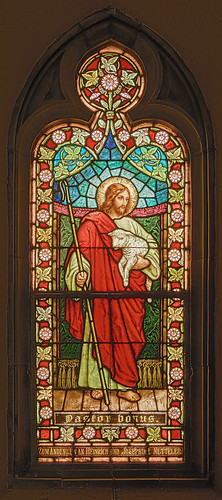
Stained glass window of Christ the Good Shepherd, in the north transept of Saint Francis de Sales Oratory in Saint Louis.

Stained glass window of Christ the Good Shepherd, in the north transept of Saint Francis de Sales Oratory in Saint Louis.
Saturday, April 17, 2010
Photos of Saint Alphonsus Liguori Church in Saint Louis
ABOUT A YEAR ago, Saint Alphonsus Liguori Church in Saint Louis reopened after a devastating fire. I lately revisited this church for the first time since its reopening. The church is located on North Grand Avenue, about eight blocks up from Saint Louis University, and about three or four road miles to the northwest of the Old Cathedral.
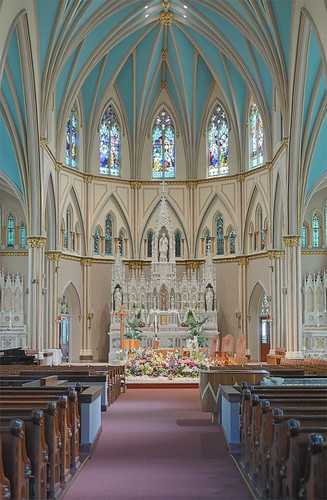
The church appears to be nearly identical to when I last visited.

The altar is made of wood and is in the middle of the transept; here it is decorated for the feast of the Resurrection of Our Lord.
The ordering of the sanctuary and baptismal font appear to be based on the USCCB document Art and Environment in Catholic Worship.

The tabernacle is placed in the center of the old high altar.
I neglected to bring my camera's tripod on this trip, so I had to hand-hold the camera, making these photos somewhat blurry.
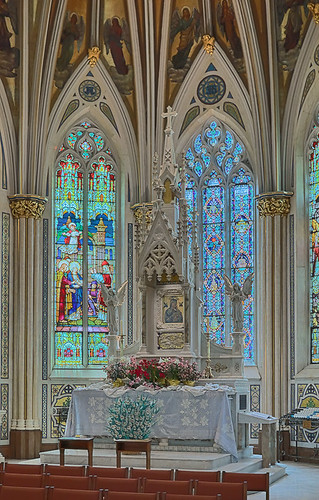
This shrine of Our Mother of Perpetual Help. The devotion has Redemptorist roots, and that religious order still staffs this church.
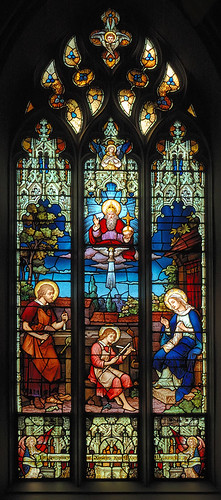
Stained glass window of the Holy Family.
For more information, and for photos dating from my 2007 pre-fire visit, please click here. Those photos are featured in the book Catholic St. Louis: A Pictorial History, and on a segment of the KETC television show Living St. Louis.

The church appears to be nearly identical to when I last visited.

The altar is made of wood and is in the middle of the transept; here it is decorated for the feast of the Resurrection of Our Lord.
The ordering of the sanctuary and baptismal font appear to be based on the USCCB document Art and Environment in Catholic Worship.

The tabernacle is placed in the center of the old high altar.
I neglected to bring my camera's tripod on this trip, so I had to hand-hold the camera, making these photos somewhat blurry.

This shrine of Our Mother of Perpetual Help. The devotion has Redemptorist roots, and that religious order still staffs this church.

Stained glass window of the Holy Family.
For more information, and for photos dating from my 2007 pre-fire visit, please click here. Those photos are featured in the book Catholic St. Louis: A Pictorial History, and on a segment of the KETC television show Living St. Louis.
Friday, April 16, 2010
Vocations Card
FROM A PRAYER CARD found at Saint Francis Xavier Church in Saint Louis:
The Jesuits were the premier religious order of the Counter-Reformation. The Society of Jesus ought to be better understood as the Company of Jesus, with ‘company’ being a military unit. So in its original charism, the Society was very much a part of the Church Militant. Their evangelization was typically aimed at the top of society, evangelizing Kings and the ruling class, both in Europe and worldwide, and in this mission the Society founded many universities. And Jesuits proved themselves with great courage, risking their lives in evangelization much as a soldier risks his life in battle.
But the Counter-Reformation ended with the Second Vatican Council, and so the Jesuits went into decline as confusion developed about their charism. The Counter-Reformation was aimed against Protestantism, but the pro-life movement, unforeseen by the Council, proved that faithful Protestants could be allies with Catholics in the world; however the Council was indeed prescient in that it foresaw that that the greatest challenge to the Gospel was not small heretical sects, but rather the widespread secularization of society. This next phase in the evangelization of the world has yet to get a name, but certainly the Jesuits can forcefully participate, even as the Benedictines have thrived beyond the Dark Ages.
Here are characteristics of Jesuit life:
— They take vows of poverty and obedience but not stability; an individual Jesuit owns nothing, and lives and works where he is told.
— They live in community, but do not pray in community. The Divine Office is prayed privately and there is no distinctive Jesuit ritual or liturgy.
— No distinctive habit. They wear the dress of the local diocesan clergy.
— Jesuits take vows of chastity and cannot marry, and must not form romantic relationships; however, they are not cloistered and instead live in the world.
— Jesuits are typically learned professionals and are assigned work by their superior.
I am tempted to return home so that I would scream like crazy in the Sorbonne and the other universities of Europe that thousands upon thousands and millions upon millions are waiting to hear God's Word - and I felt that not one student was willing to say as Samuel did: “Here I am Lord. What do you want me to do?”A Jesuit friend tells me that the local province of the Society now has more young scholastics then they have had for decades.
- St. Francis Xavier in a letter to St. Ignatius Loyola
Gracious God, give to the Society of Jesus men who are on fire for Christ and desire in all things to love and to serve.
www.BeAJesuit.org
The Jesuits were the premier religious order of the Counter-Reformation. The Society of Jesus ought to be better understood as the Company of Jesus, with ‘company’ being a military unit. So in its original charism, the Society was very much a part of the Church Militant. Their evangelization was typically aimed at the top of society, evangelizing Kings and the ruling class, both in Europe and worldwide, and in this mission the Society founded many universities. And Jesuits proved themselves with great courage, risking their lives in evangelization much as a soldier risks his life in battle.
But the Counter-Reformation ended with the Second Vatican Council, and so the Jesuits went into decline as confusion developed about their charism. The Counter-Reformation was aimed against Protestantism, but the pro-life movement, unforeseen by the Council, proved that faithful Protestants could be allies with Catholics in the world; however the Council was indeed prescient in that it foresaw that that the greatest challenge to the Gospel was not small heretical sects, but rather the widespread secularization of society. This next phase in the evangelization of the world has yet to get a name, but certainly the Jesuits can forcefully participate, even as the Benedictines have thrived beyond the Dark Ages.
Here are characteristics of Jesuit life:
— They take vows of poverty and obedience but not stability; an individual Jesuit owns nothing, and lives and works where he is told.
— They live in community, but do not pray in community. The Divine Office is prayed privately and there is no distinctive Jesuit ritual or liturgy.
— No distinctive habit. They wear the dress of the local diocesan clergy.
— Jesuits take vows of chastity and cannot marry, and must not form romantic relationships; however, they are not cloistered and instead live in the world.
— Jesuits are typically learned professionals and are assigned work by their superior.
Thursday, April 15, 2010
Dogwoods in bloom

Dogwood in bloom; photo taken yesterday.
The Flowering dogwood, Cornus florida, is the Missouri state tree, and its native range extends eastward from the Great Plains, from Toronto to central Florida. The name ‘dogwood’ is a corruption of ‘dagwood’: the wood of Cornus species is very hard and dense, and was used to make daggers or skewers for cooking, as well as golf club heads, tool handles, and arrow shafts. Its was also used as a substitute for quinine and for making scarlet dyes. Another name for this is whippletree, as found in Chaucer. The ends of the flower petals are ragged and sometimes red in color, and so this flower is a symbol of the Crucifixion.
Wednesday, April 14, 2010
Photos of the Compton Hill Water Tower
ON APRIL 3rd, I went on a field trip with a local photography club to the Compton Hill Water Tower, located on South Grand Boulevard in Saint Louis, Missouri.
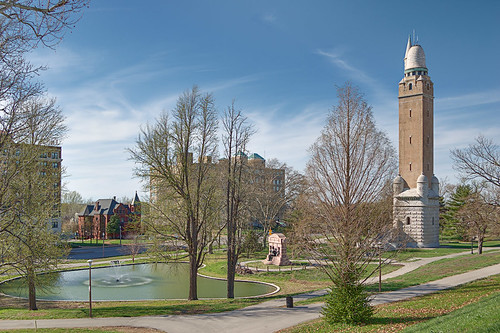
This decorative tower was used as a standpipe, regulating the uneven water pressure generated by the enormous reciprocating steam pumps used in the late 19th century. Out of hundreds originally made, only seven standpipes such as these still exist in the United States; three of them are in Saint Louis, while the most famous example is perhaps the water tower in Chicago. These were made obsolete by the use of smaller electric centrifugal pumps, which provide uniform water pressure.
I've visited this tower many times, so I hope to provide some different views. These photos were taken with two separate cameras: my newer one has much better image quality, and the older one has a much longer telephoto lens.

A wrought-iron staircase winds around the standpipe. These stairs are designed to be comfortable and easy to climb, with plenty of places to stop and rest. This tower was specifically designed with the general public in mind, allowing visitors to climb to the top and enjoy the view. An older mind-set, dating from antiquity and only ending with the Victorian era, thought that public works ought to be beautiful and easily accessible to the public.
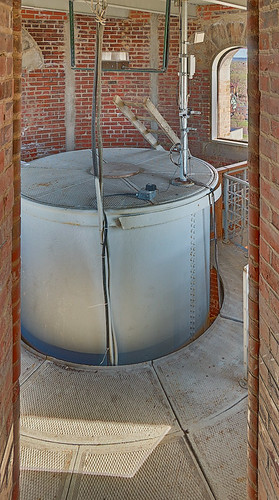
The top of the standpipe. There are some modern electronics installed here.
A smaller staircase leads upward to the observation deck.
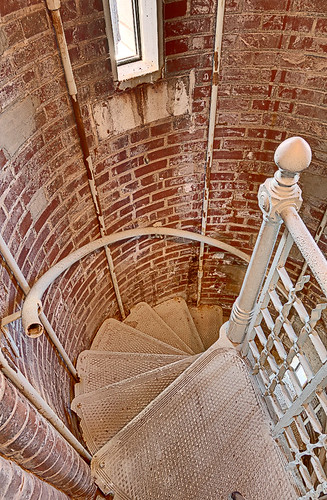
Looking down those stairs.
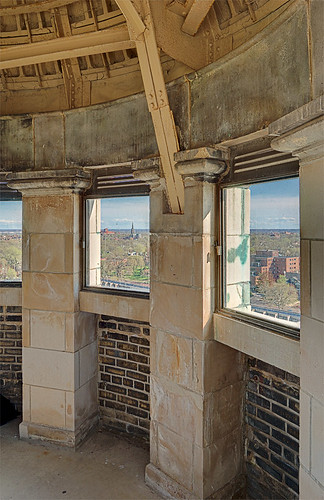
The observation deck offers a nearly 360 degree panorama of the city, and these windows open up, allowing an unobstructed view.
The tower is open to the general public on the first Saturday of each month from April to November from noon until 4 p.m. The $5 admission fee pays for the upkeep of the tower.
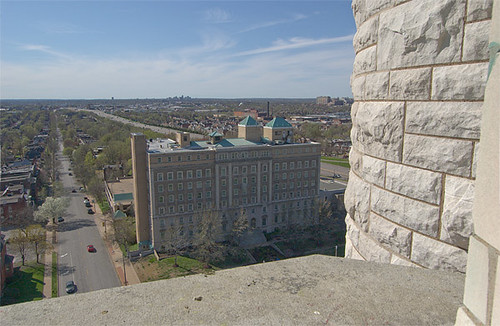
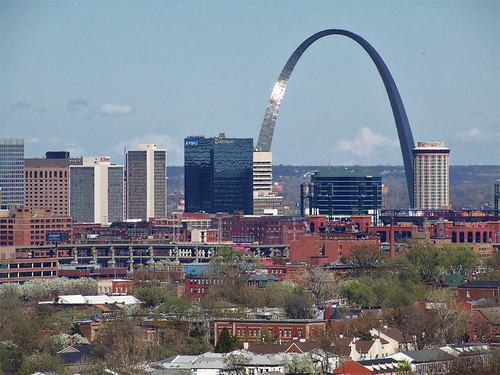
Downtown Saint Louis, showing the Gateway Arch and the new Busch Stadium.
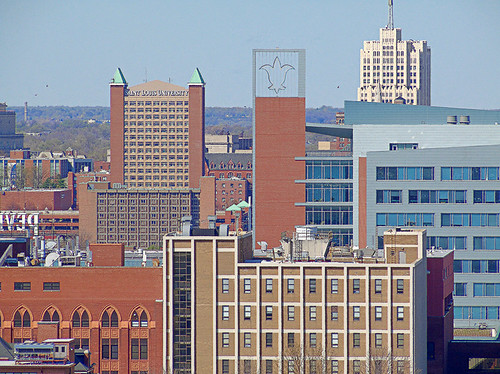
Saint Louis University, founded in 1818, and led by the Society of Jesus.
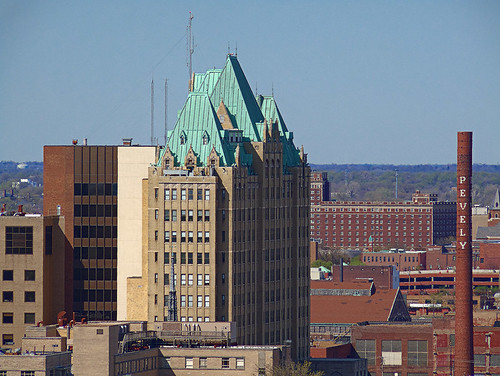
The former Firmin Desloge Catholic hospital. The chapel there was designed by Ralph Adams Cram and is featured in the book Catholic St. Louis: A Pictorial History.
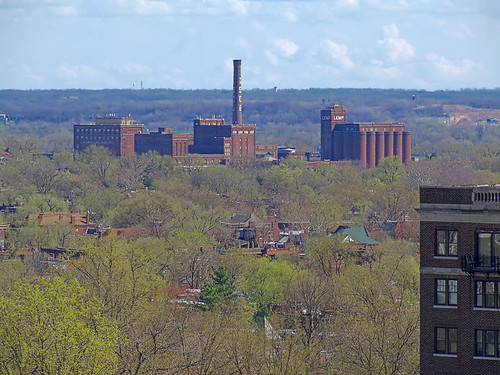
The old Lemp Brewery, closed down with Prohibition.
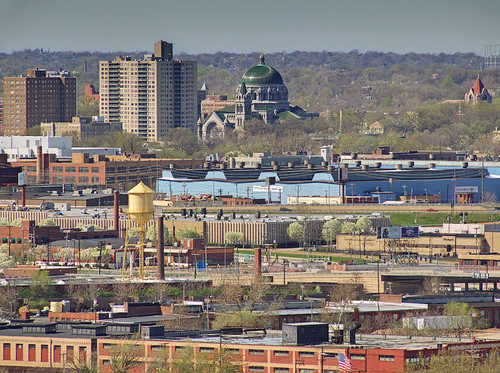
Beyond an industrial district is the magnificent Cathedral Basilica of Saint Louis.
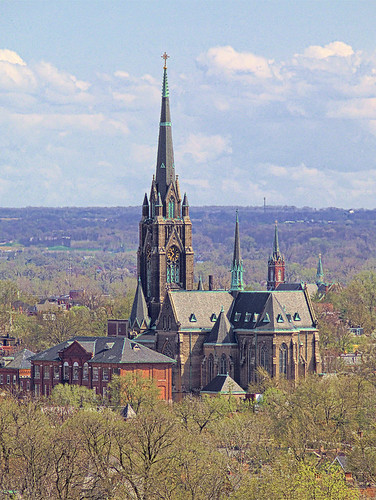
Saint Francis de Sales Oratory, home of an apostolate of the Institute of Christ the King Sovereign Priest.
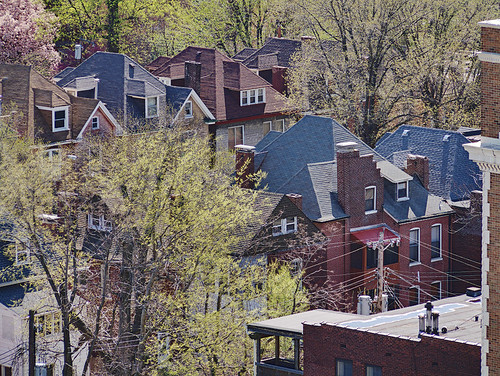
Rooftops of some homes in the neighborhood.
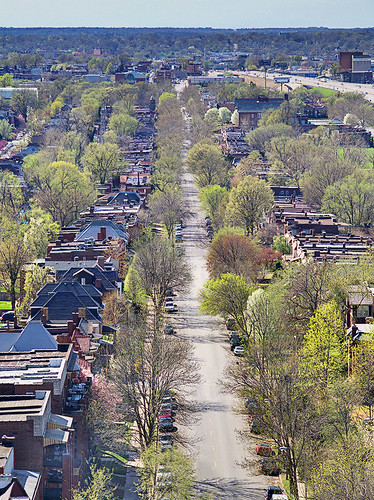
A view along Shaw Boulevard. I like the pale green of the new leaves on the trees.
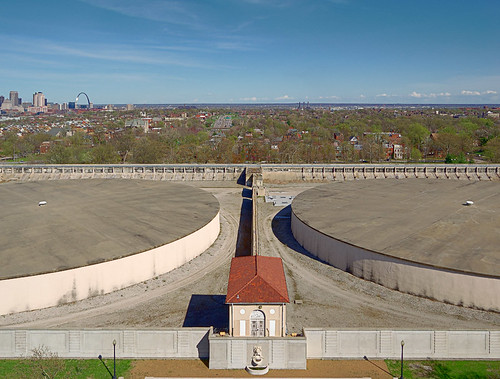
Compton Hill is one of the highest points in the city, and at its peak is a water reservoir. For a while, the basin was an uncovered pool; later, it was covered and had public tennis courts on top. Now, new cylindrical water tanks are hidden behind the decorative walls.

Looking down the tower. Your devoted blogger has little fear in doing what is needed to take pictures for you.
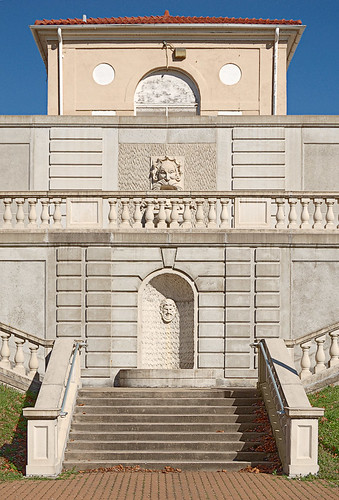
Back down on ground level, a view of the nicely ornamented reservoir.
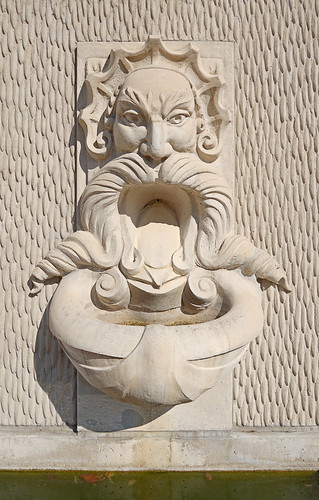
A decorative fountain on the reservoir wall.
Website of the Water Tower and Park Preservation Society: http://www.watertowerfoundation.org
Click here for my older photos from the tower.

This decorative tower was used as a standpipe, regulating the uneven water pressure generated by the enormous reciprocating steam pumps used in the late 19th century. Out of hundreds originally made, only seven standpipes such as these still exist in the United States; three of them are in Saint Louis, while the most famous example is perhaps the water tower in Chicago. These were made obsolete by the use of smaller electric centrifugal pumps, which provide uniform water pressure.
I've visited this tower many times, so I hope to provide some different views. These photos were taken with two separate cameras: my newer one has much better image quality, and the older one has a much longer telephoto lens.

A wrought-iron staircase winds around the standpipe. These stairs are designed to be comfortable and easy to climb, with plenty of places to stop and rest. This tower was specifically designed with the general public in mind, allowing visitors to climb to the top and enjoy the view. An older mind-set, dating from antiquity and only ending with the Victorian era, thought that public works ought to be beautiful and easily accessible to the public.

The top of the standpipe. There are some modern electronics installed here.
A smaller staircase leads upward to the observation deck.

Looking down those stairs.

The observation deck offers a nearly 360 degree panorama of the city, and these windows open up, allowing an unobstructed view.
The tower is open to the general public on the first Saturday of each month from April to November from noon until 4 p.m. The $5 admission fee pays for the upkeep of the tower.


Downtown Saint Louis, showing the Gateway Arch and the new Busch Stadium.

Saint Louis University, founded in 1818, and led by the Society of Jesus.

The former Firmin Desloge Catholic hospital. The chapel there was designed by Ralph Adams Cram and is featured in the book Catholic St. Louis: A Pictorial History.

The old Lemp Brewery, closed down with Prohibition.

Beyond an industrial district is the magnificent Cathedral Basilica of Saint Louis.

Saint Francis de Sales Oratory, home of an apostolate of the Institute of Christ the King Sovereign Priest.

Rooftops of some homes in the neighborhood.

A view along Shaw Boulevard. I like the pale green of the new leaves on the trees.

Compton Hill is one of the highest points in the city, and at its peak is a water reservoir. For a while, the basin was an uncovered pool; later, it was covered and had public tennis courts on top. Now, new cylindrical water tanks are hidden behind the decorative walls.

Looking down the tower. Your devoted blogger has little fear in doing what is needed to take pictures for you.

Back down on ground level, a view of the nicely ornamented reservoir.

A decorative fountain on the reservoir wall.
Website of the Water Tower and Park Preservation Society: http://www.watertowerfoundation.org
Click here for my older photos from the tower.
Subscribe to:
Posts (Atom)



